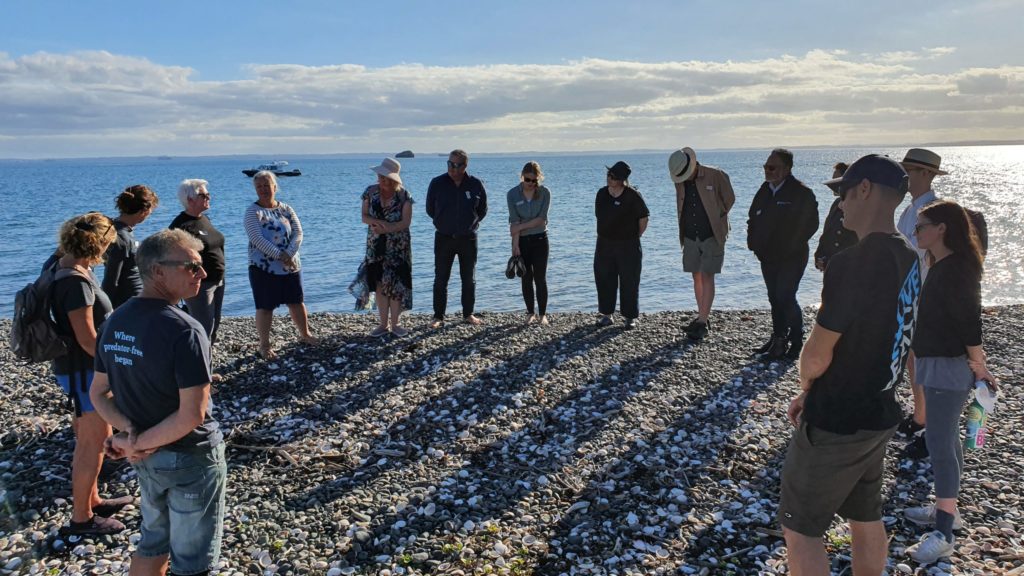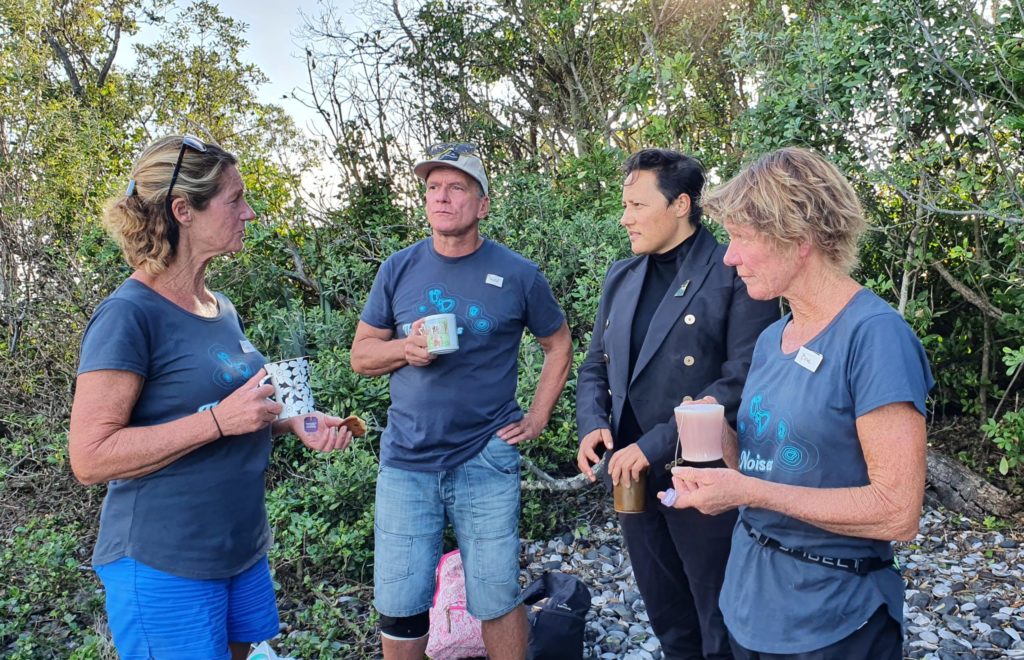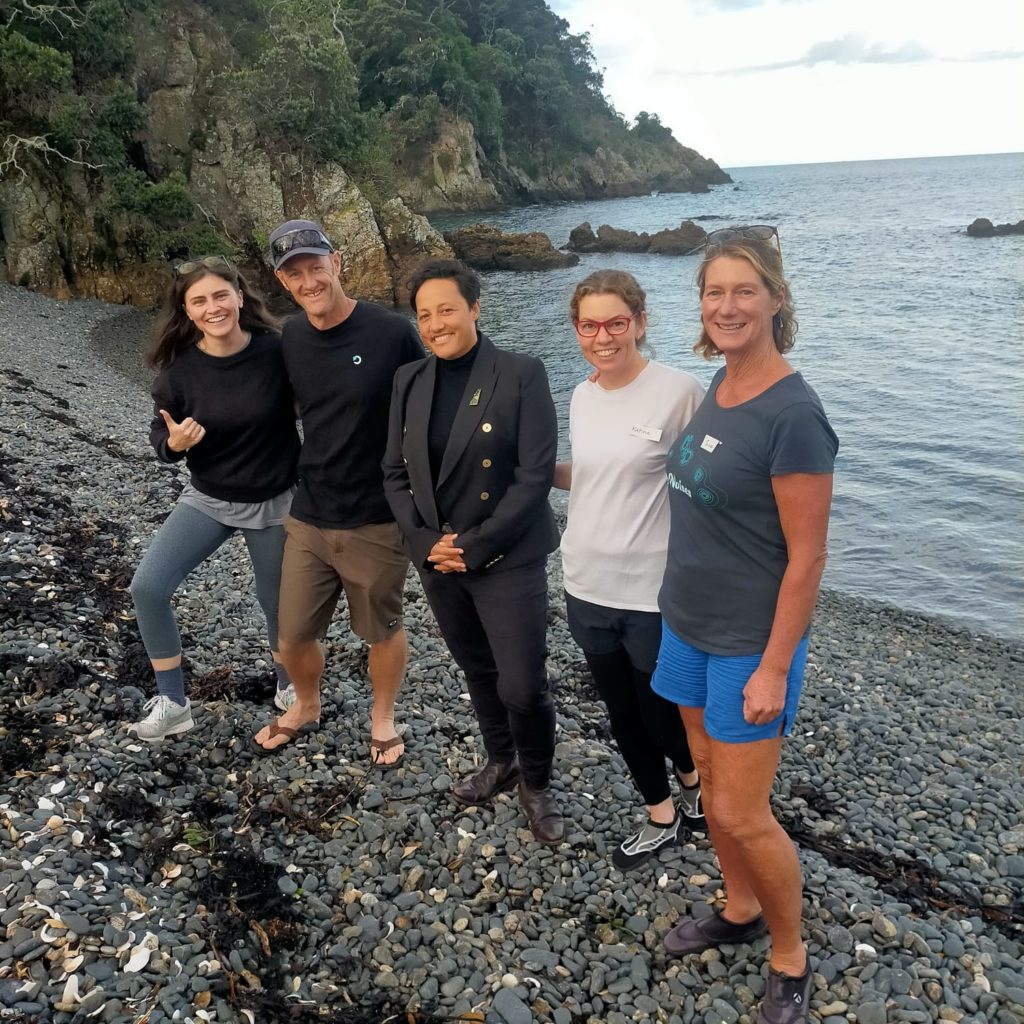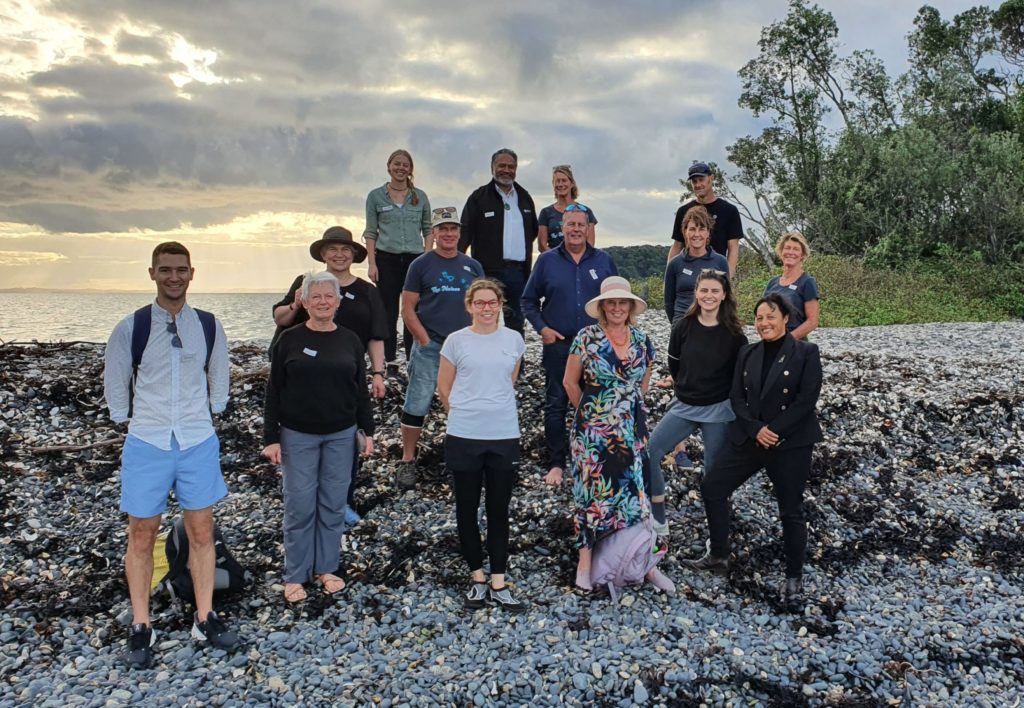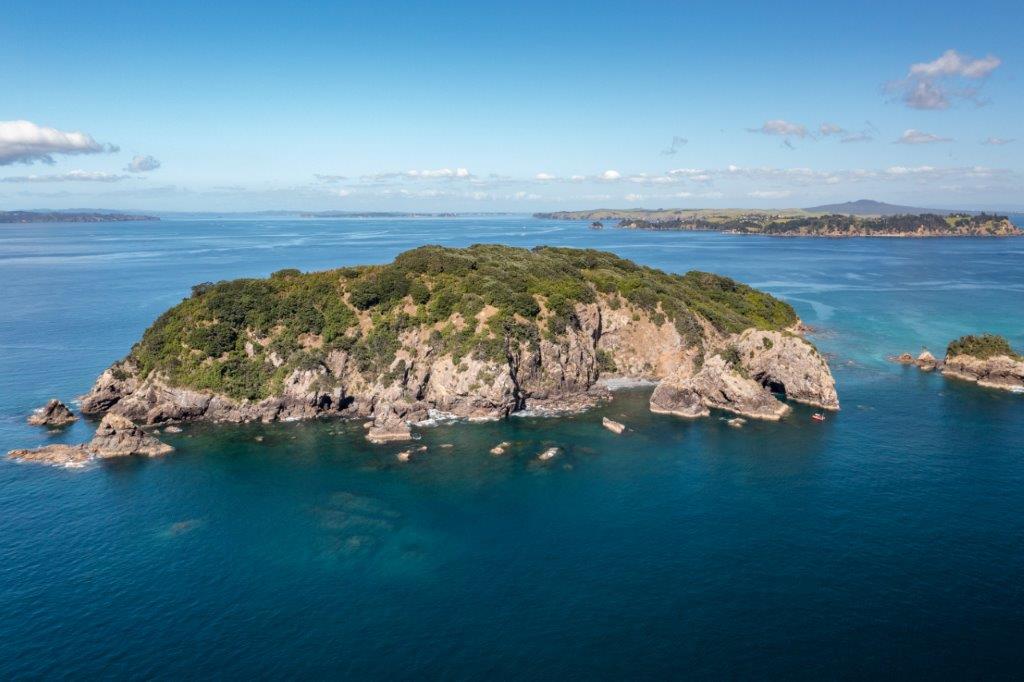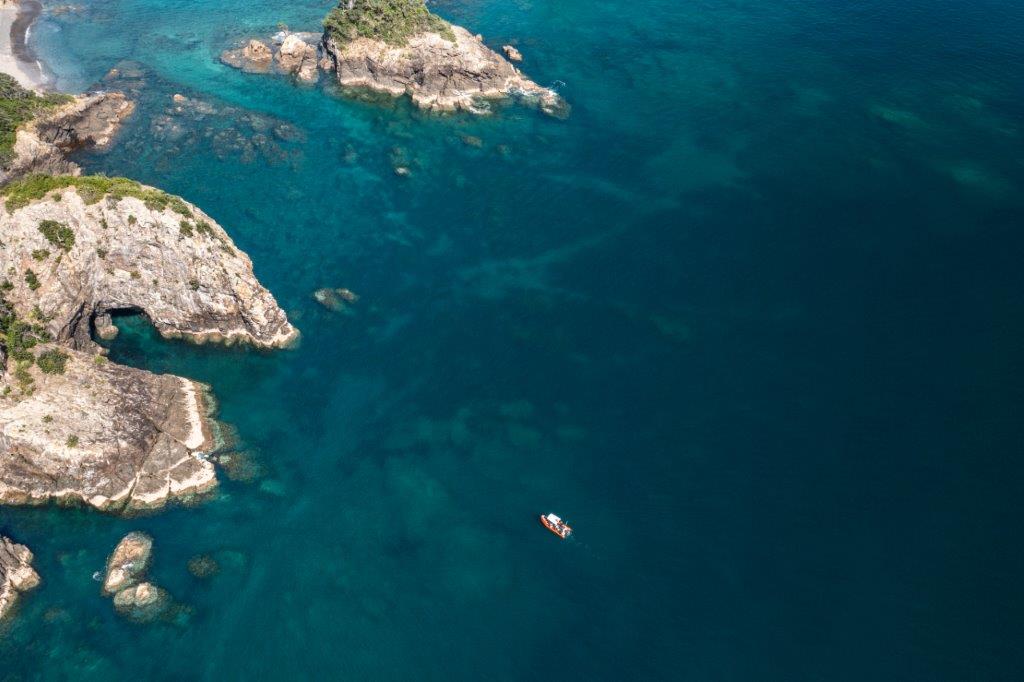The Noises hold a very special interest for seabird lovers. Being home to at least…
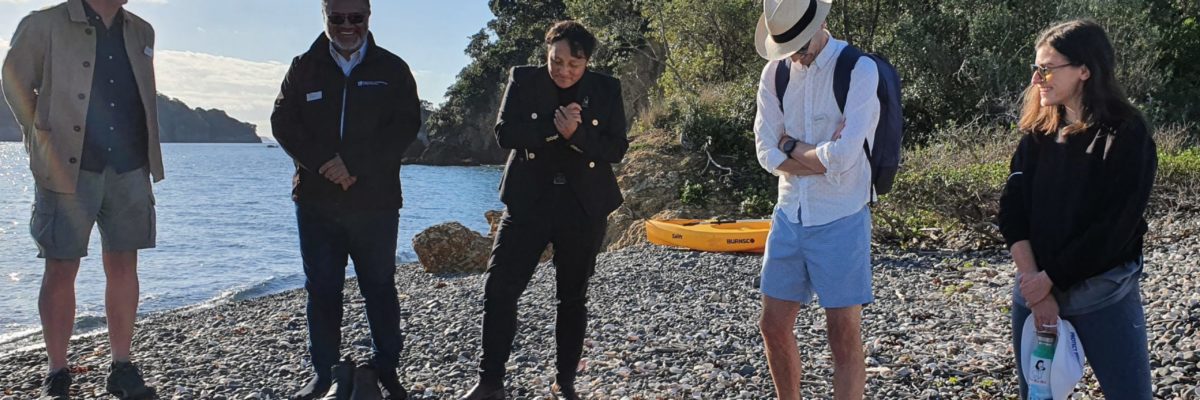
Honoured by Minister Kiri Allan’s visit to The Noises
It’s human nature to want to share the “firsts”.
This week, we welcomed Minister of Conservation, Hon. Kiri Allan to The Noises. It’s the first time a sitting Minister has visited the islands.
As Minister of Conservation, Hon. Kiri Allan will be the sponsor of legislation to create High Protection [Marine] Areas in the Hauraki Gulf Marine Park. The Minister is currently considering whether to, and how to include The Noises marine protection proposal into this legislative package.
But, putting all of that technical procedural stuff to the side for a moment.
I was reminded on this auspicious day of the long association that the Neureuter family and The Noises have with the Department of Conservation.
In the 1970s, the New Zealand Wildlife Service (the precursor to DOC) approached the Neureuter family for permission to build a basic hut on Motuhoropapa Island which was used for research by Dr Phil Moors and others. From 1977 to 1983, their studies considered the biology and effects of the Norwegian Rat on native flora and fauna on offshore islands and pioneered rat eradication knowledge that is still used today.
The relationship between The Noises and the Department is over 40 years old (older than this author!). This serves to highlight the value of intergenerational knowledge and long-term relationships. Politicians will acknowledge that they come and go, but mana whenua, local custodians, and institutions like the Auckland Museum, carry responsibility for knowledge and the responsibility to pass that knowledge to generations that follow.
What we should expect from our governments is that they provide the appropriate legislative scaffolding to ensure that special places like The Noises and the surrounding marine ecosystems are looked after, and done so in a manner that ensures intergenerational knowledge is preserved and valued and can contribute to the management of the place.
It was fitting for this significant first that we had the most stunning weather for the Minister’s visit. Not a toe got wet as we disembarked from DOC’s boat, The Taikehu, onto Ōtata Island’s main beach.
After formally welcoming the Minister on the beach, the talking stick was passed to Dr Louise Furey from Auckland Museum who provided an overview of the findings from the Ōtata midden. The midden tells us about past occupations, huge biodiversity, and abundance of kaimoana.
The recent losses of the midden from storm impacts illustrate how these knowledge sets and special places are now threatened by the effects of global warming and rising sea levels.
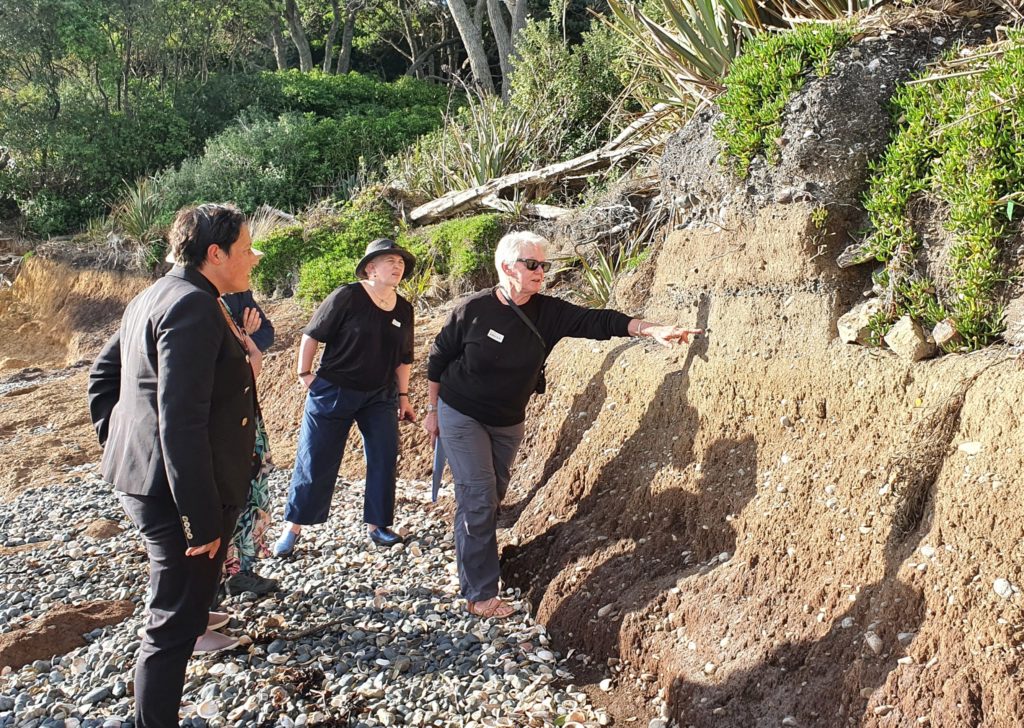
From the past to the present, Dr Nick Shears from the University of Auckland was able to show the manuhiri kina barrens in place of a vibrant marine ecosystem using a drop camera over the side of the boat. Thankfully, a whai/short-tailed stingray and kekeno/fur seal showed themselves, as if to reinforce to our distinguished guest that The Noises habitat is an amazing and biodiverse place, even if it is just holding on by the skin of its teeth.
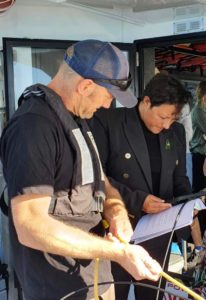
The Neureuter family painted the picture of grim change that has occurred in the marine ecosystems in their lifetime, and we all valued the opportunity to hear from the Minister about the parameters and considerations she’s weighing up.
The visit was supported by DOC officials, Auckland Central MP Chlöe Swarbrick and MP Helen White, along with the Chief Executive and staff of Auckland Museum.
Ngā mihi nui kia Minita Allan for creating the time in your schedule to visit The Noises. We are honoured by your visit, which will remain historically important in the relationship between The Noises and the Department of Conservation for generations to come.

